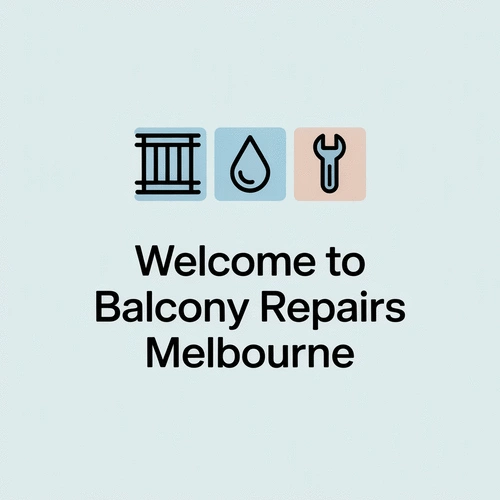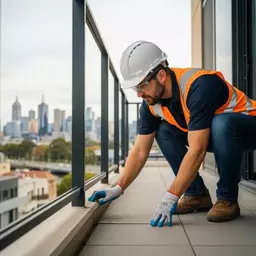When it comes to balcony safety, many homeowners are unaware of the crucial compliance standards that protect their investments and loved ones. Understanding these regulations can make the difference between enjoying your outdoor space and facing costly repairs or legal issues.
What You Will Learn
- Safety Assurance: Compliance standards significantly reduce the risk of balcony-related accidents.
- Structural Integrity: Adhering to regulations ensures your balcony is built to last, minimizing costly repairs.
- Legal Protection: Following compliance standards protects you from potential lawsuits or fines arising from safety violations.
- Essential Building Codes: Familiarize yourself with the National Construction Code (NCC) and other relevant standards to make informed decisions.
- Balustrade Requirements: Understanding the specific height and strength requirements for balustrades is crucial for safety.
- Waterproofing Importance: Quality waterproofing is essential to protect balconies from Melbourne's variable climate and prevent damage.
- Cost Considerations: Plan for expenses related to inspections, repairs, and compliance upgrades to avoid financial surprises.
- Long-term Benefits: Investing in compliance not only enhances safety but can also boost your property’s value.
Key Areas of Balcony Compliance
Balcony compliance involves various critical regulations and design considerations to ensure safety and structural integrity. Below are the essential components.
Building Codes & Regulations
- National Construction Code (NCC)
- Building Code of Australia (BCA)
- Victorian Building Authority (VBA) oversight
Ensures fundamental safety and structural requirements.
Balustrade Compliance
- Minimum height: 1.1 meters
- Gap size: No 125mm sphere pass-through
- Specific load-bearing capacities
Critical for preventing falls and ensuring user safety.
Waterproofing Standards
- Reliable waterproof membrane
- Protection against weather damage
- Prevention of mold growth
Essential for durability, structural integrity, and hygiene.
Design Guidelines
- Durable material selection
- Effective drainage systems
- Aesthetic and safety considerations
Combines functionality, safety, and visual appeal.
Understanding Balcony Compliance Standards in Melbourne
As a homeowner in Melbourne, understanding balcony compliance standards is crucial for ensuring the safety and structural integrity of your property. It’s not just about aesthetics; compliance safeguards you legally and protects your investment. Imagine stepping out on your balcony, only to feel uneasy about its safety. By adhering to compliance standards, you can avoid such worries and enjoy your space with peace of mind! For more detailed guidance, consider these balcony care tips for homeowners.
Balcony compliance encompasses a variety of regulations that ensure every balcony is not only beautiful but also secure. These standards can significantly impact your property's value, as well as your family's safety. So, let’s delve deeper into why these regulations matter and how they help you maintain a secure and compliant balcony.

Why Balcony Compliance Matters for Homeowners
Balcony compliance is essential for several reasons:
- Safety: A compliant balcony minimizes the risk of accidents, ensuring that your family and guests are safe when using the space.
- Structural Integrity: Adhering to regulations means your balcony is built to last, reducing the likelihood of costly repairs due to structural failures.
- Legal Protection: By following compliance standards, you protect yourself from potential legal liabilities that can arise from accidents or injuries.
When you neglect compliance, the consequences can be dire—not just for your wallet but for the safety of those using your balcony. Understanding these standards should be a priority for every homeowner!
Overview of Key Regulations and Building Codes
In Australia, the National Construction Code (NCC) and the Building Code of Australia (BCA) lay the groundwork for building regulations. These documents outline the essential requirements that must be met for balcony construction and maintenance. They are designed to ensure that all structures, including balconies, are safe, sustainable, and fit for use.
Additionally, several relevant Australian Standards, such as AS 1170 for structural design actions, play a significant role in balcony compliance. Familiarizing yourself with these codes can empower you to make informed decisions regarding your balcony's design and safety features.
Role of the Victorian Building Authority in Balcony Compliance
The Victorian Building Authority (VBA) oversees compliance and safety standards for balconies in Melbourne. They ensure that all construction and renovation projects align with the established codes and regulations. This means the VBA plays an essential role in maintaining the safety of balconies across our beautiful city.
As a homeowner, it’s wise to refer to the VBA for guidance on compliance requirements and to stay updated on any changes that may affect your balcony. They are a valuable resource for anyone looking to ensure their balcony meets all necessary standards.
Essential Regulations for Balcony Compliance
Now that we've established the importance of compliance, let’s look at the essential regulations that you need to be aware of when it comes to your balcony.
Navigating Building Codes Specific to Melbourne
Melbourne's balcony regulations are dictated by various building codes, which provide guidelines on structural loads and safety requirements. These codes ensure that balconies can support the weight of furniture, people, and environmental factors like wind and rain.
- Structural Loads: Ensure your balcony can handle the expected load without compromising safety.
- Safety Regulations: Familiarize yourself with safety protocols that include railing specifications and load capacities.
By understanding these regulations, you can confidently design or renovate a balcony that is both compliant and safe! For more information on how to detect common issues, read about how to spot balcony leaks in homes.
Balustrade Compliance: Height, Strength, and Safety
Balustrades are a critical element of balcony safety. Compliance requires specific standards for height, strength, and spacing:
- Height Restrictions: The minimum height for balustrades is typically 1.1 meters to prevent falls.
- Gap Sizes: Openings should not allow a 125mm sphere to pass through, ensuring children and pets are safe.
- Load-Bearing Capacities: Balustrades must withstand a certain load to ensure they do not collapse.
Meeting these requirements is vital to creating a secure environment on your balcony. Regular inspections can help keep your balustrades in check!
The Importance of Waterproofing in Melbourne's Climate
Waterproofing is another key element of balcony compliance, especially in Melbourne's variable climate. A reliable waterproof membrane can protect your balcony from weather-related damage and prevent mold growth.
By investing in high-quality waterproofing solutions, you not only enhance the lifespan of your balcony but also ensure compliance with industry standards. Don't overlook this critical aspect! For comprehensive details, explore waterproofing solutions for Melbourne balconies.
Balcony Design Guidelines for Safety and Compliance
Lastly, let’s discuss the design standards necessary for enhancing both the aesthetic appeal and safety of your balcony:
- Material Selection: Choose durable materials that withstand weather conditions.
- Drainage Systems: Ensure proper drainage to prevent water pooling and damage.
- Aesthetic Considerations: While safety is paramount, consider how the design complements your home.
By adhering to these design guidelines, you can create a balcony that is not only beautiful but also compliant and safe for all to enjoy!
Pro Tip
Did you know? Regular maintenance checks on your balcony can prevent costly repairs in the long run. Schedule inspections at least twice a year to identify potential issues early—this proactive approach can save you both time and money!
Evaluating Cost Implications of Compliance Upgrades
When it comes to balcony compliance upgrades, understanding the financial implications is key. Many homeowners in Melbourne may underestimate the costs involved, which can range significantly depending on the scope of the project. Factors like repairs, upgrades, and hiring professionals can all add up. That’s why it’s crucial to create a realistic budget before diving into any compliance work.
Here are some potential costs you should consider:
- Initial inspection fees for compliance assessments
- Repair costs for any identified issues
- Upgrades to meet current building codes
- Professional fees for certified builders or engineers
Don’t forget to factor in any unexpected repairs that may arise during the upgrade process. I often tell my clients to plan for a little extra in their budget to avoid surprises down the line!

Long-term Benefits of Compliance Investments
Investing in balcony compliance not only ensures safety but also brings long-term benefits that can enhance property value. Think of compliance as a preventative measure. By addressing potential issues now, you can save on larger, unexpected costs in the future. For example, a well-maintained balcony can make a property more appealing to buyers or renters, boosting its resale value.
Moreover, compliance can protect you from potential legal issues. If your balcony meets all local regulations, you’re less likely to face fines or lawsuits stemming from safety violations. This peace of mind can be invaluable for homeowners.
Impact of Building Defects on Compliance Costs
It’s important to understand how existing building defects can escalate compliance costs. If your balcony has underlying issues—like structural weaknesses or water damage—these problems can lead to more extensive repairs before compliance can be achieved. I’ve seen cases where homeowners have had to invest significantly more than expected due to pre-existing conditions.
Here are some common defects that can drive up compliance costs:
- Cracked or damaged concrete
- Weak or corroded railings
- Poor drainage systems
- Inadequate waterproofing measures
Addressing these defects promptly not only helps ensure compliance but can also prevent further deterioration and expense down the road. If you’re unsure about the condition of your balcony, consider reaching out to us at Balcony Repairs Melbourne for a thorough assessment!
Recap of Key Points
Here is a quick recap of the important points discussed in the article:
- Safety First: Compliant balconies minimize accident risks, ensuring safety for family and guests.
- Understand Regulations: Familiarize yourself with the National Construction Code (NCC) and Building Code of Australia (BCA) to ensure compliance.
- VBA's Role: Consult the Victorian Building Authority for guidance on compliance requirements and updates.
- Balustrade Standards: Ensure balustrades meet height, strength, and gap specifications to enhance safety.
- Waterproofing is Key: Invest in quality waterproofing to protect against Melbourne's variable climate.
- Budget Wisely: Consider all potential costs associated with compliance upgrades to avoid financial surprises.
Frequently Asked Questions About Balcony Compliance
What are the main compliance standards for balconies in Melbourne?
The main compliance standards for balconies in Melbourne are primarily governed by the National Construction Code (NCC) and the Building Code of Australia (BCA). These include regulations for structural integrity, balustrade height and strength, and waterproofing requirements, all overseen by the Victorian Building Authority (VBA).
Why is balustrade compliance so important?
Balustrade compliance is critical for preventing falls and ensuring user safety. Regulations specify minimum heights (typically 1.1 meters), maximum gap sizes (no 125mm sphere pass-through), and load-bearing capacities to ensure they can withstand force without collapsing.
What role does waterproofing play in balcony compliance?
Waterproofing is essential for balcony compliance, especially in Melbourne's climate. A reliable waterproof membrane protects the balcony structure from weather damage, prevents moisture penetration, and minimizes the risk of mold growth, thus ensuring durability and structural integrity.
What are the potential costs associated with balcony compliance upgrades?
Costs for balcony compliance upgrades can include initial inspection fees, repair costs for identified issues, necessary upgrades to meet current building codes, and professional fees for certified builders or engineers. It's advisable to budget for unexpected repairs due to pre-existing conditions like cracked concrete or corroded railings.
How does compliance benefit homeowners in the long term?
Investing in balcony compliance offers long-term benefits by enhancing property value, ensuring the safety of occupants, and providing legal protection against potential liabilities from accidents. It acts as a preventative measure, saving homeowners from larger, unexpected repair costs in the future.









